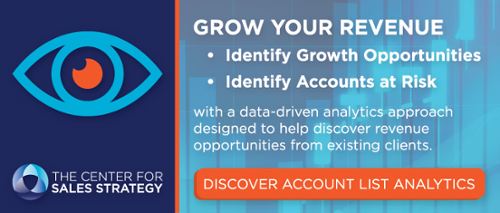
Everyone is looking for creative ways to drive new business—and we could easily provide a list of five hacks that would be helpful. But those five tips would not have the same impact that changing just one thing would have—your perspective.
There is a legendary story about a large American shoe company that sent two sales representatives to different regions of the Australian outback to scope out the business potential for the company. The first reported, “No business here. The natives don’t wear shoes.” The other wired back, “Huge opportunity! The natives don’t wear shoes.”
Same data, different conclusion. Which message would you have sent back?
What Are You Sniffing For?
 If you want a reliable hack to drive new business, change your paradigm from sniffing for prospects that are ready to buy something right now (you may have noticed they are in short supply these days) to sniffing for opportunities.
If you want a reliable hack to drive new business, change your paradigm from sniffing for prospects that are ready to buy something right now (you may have noticed they are in short supply these days) to sniffing for opportunities.
When your perspective shifts, and you search for opportunities, you’ll always be busy. Pay attention to consumer behavior, and bury yourself in business insights. Learn which categories of business are experiencing trouble or are missing growth opportunities presented by the current scenario and think about ways you can help. For example:
- Consumers were struggling to pay $50,000 for a new pickup truck before the COVID-19 crisis, but now it’s especially tough. They are trading down to late model used pickups. Can you help?
- Discretionary income is down as jobs and hours are cut, yet people are still looking for a few “affordable luxuries.” Do you know of product or service that needs help getting on that list?
- Hospitals and medical practices are suffering financially because elective procedures have been canceled or postponed due to the pandemic. Is there a way you can get the best prospects back in the funnel for a practice you know of?
Shifting your perspective from sniffing for orders to sniffing for opportunities will keep you busy, fulfilled, and you’ll be much better off financially. The inspiration for this story came from an article published by our late founder, Steve Marx, shortly after the recession produced by the dot com crash in 2000. It was true then, and it’s still true now.



